You remember the Secret Sauce?
McDonald’s kept it close for a long time. Turns out it’s pretty much thousand island dressing, tweaked a little bit. And yet, McDonad’s hasn’t had to suffer much in the way of alternative Big Macs.
Ditto Subaru – which for a long time had the recipe of wagon-plus-AWD-plus-ground-clearance-seasoned-with-affordability pretty much all to itself, even though none of this was secret and anyone could copy it.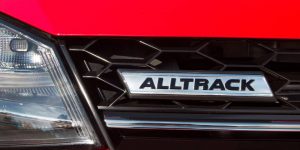
Well, someone finally has.
WHAT IT IS
The Allltrack is an Outback’d VW Golf Sportwagen . . . so to speak.
Like the Legacy-based Outback, the Alltrack is essentially a Golf Sportwagen – reviewed separately, here – with more ground clearance and standard AWD and rugged exterior body cladding.
Its base price – $25,850 – also very closely parallels the price of the Subaru Outback, which starts at $25,645.
But the two cars differ in attitude – and altitude.
The Subaru comes only with an automatic transmission – and its standard engine hasn’t got much guts. You can order more engine, but that gets expensive. As it sits, the Soobie is slow. It takes more than 9 long seconds to get to 60.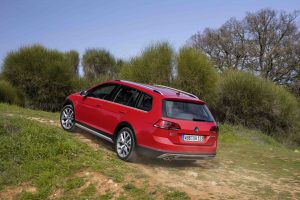
The VW is available with a manual transmission – and it gets to 60 about two seconds sooner.
But it also has about two inches less ground clearance. The Soobie’s underpans are 8.7 inches off the pavement vs. 6.9 inches for the VW.
In deep snow, the extra clearance matters at least as much as the VW’s acceleration advantage on dry pavement.
You pays your money and you takes your choices!
WHAT’S NEW
The Golf Alltrack is a new model for VW.
A larger, Passat-based Alltrack will also be available soon.
Much quicker than its main rival, the Subaru Outback.
Your choice of manual or automatic transmission. Outback is automatic-only.
Tighter turning circle than Outback; smaller footprint – easier to maneuver and park in tight spots.
Almost-Audi attention to detail and high-end vibe.
Outback’s better qualified for snow-day driving due to its extra ground clearance.
Smaller footrprint and easier-to-park comes at cost of much less backseat and a bit less cargo room than Outback has.
Center console storage bin is tiny; won’t take much more than a wallet or cell phone.
Not rated to tow anything.
The Alltrack uses the same engine as the Sportwagen – a turbocharged 1.8 liter four that makes 170 hp. This is five horsepower fewer than the Outback’s standard (and larger) 2.5 liter four, which isn’t turbocharged and makes 175 hp.
But because it is turbocharged, the VW’s smaller four makes more torque – 199 ft.-lbs. vs. 174 ft.-lbs. the Ouback’s non-turbocharged four. And it makes it much earlier, at just 1,600 RPM vs. 4,000 RPM for the Subaru.
This – plus the fact that the VW weighs 500-plus pounds less than the Subaru (3,063 lbs. vs. 3,593 lbs.) accounts for most of the reason why the VW is so dramatically quicker. Zero to 60 in the mid sevens vs. the mid-nines for the 2.5 liter-equipped Outback.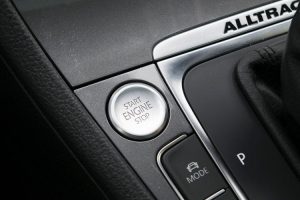
There’s another factor, too.
The VW is available with either a manual transmission or an automated manual (DSG) transmission, but the Subaru comes only with a continuously variable (CVT) automatic.
CVTs are fundamentally efficiency rather than performance-minded transmissions. They are single-speed transmissions, with one continuously variable forward range, which varies according to throttle input. As you push down on the accelerator pedal, the engine revs, but the transmission doesn’t shift.
CVTs are designed to keep the engine at the ideal RPM for best fuel economy – and Subaru has adopted them across their model range precisely for that reason – but they aren’t the hot ticket for acceleration in a car without much gumption in the lower RPM ranges – like the Outback – because the engine has to be revved to where it makes power before the car can get going.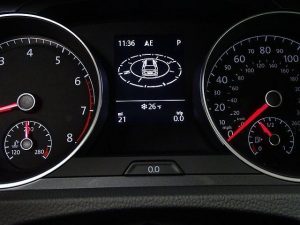
With a manual transmission, you can raise the engine RPM before the light goes green – and by doing so, get the engine up into the rev range where it’s got some gumption.
And with the DSG automated manual, the same thing happens, just automatically.
The VW works well with either the manual or the automatic because it has gumption on the low end. As well as gumption higher up the RPM scale, too.
But the Subaru does have another card to play – in addition to the extra almost two inches of ground clearance that makes it the better Snow Day car. . . .
You can order it with a 3.6 liter six-cylinder engine that makes 256 hp – and 247 ft.-lbs. of torque. This more than bridges the Acceleration Gap between the two cars. But this version of the Outback stickers for $34,995 to start – several thousand dollars more than the most expensive version of the Alltrack and well within Audi (A4 Avant Quattro) territory.
4Motion AWD is standard, of course.
And the Alltrack’s version comes with an Off Road mode that isn’t available in the otherwise very similar Golf Sportwagen.
There are also Sport, Normal and Custom settings.
The Alltrack is also fitted with get different wheels (17 and 18 inches) and tires than the Sportwagen gets, as well as underbody skid plates for protection when driving off road.
One thing you don’t get is much in the way of rated towing capacity. Despite its torquey turbocharged engine, VW doesn’t rate the Alltrack to pull anything.
The Outback is rated to tow up to 3,000 lbs.
A few months back, I spent a week test-driving the Sportwagen – and the Alltrack behaves similarly. It’s not quite as quick as the Sportwagen – especially the FWD versions of the Sportwagen. Which you’d expect, given the added weight of the Alltrack’s standard 4Motion AWD system.
But what you don’t expect is comparable handling – given the Alltrack’s higher stance.
Usually, that results in some top-heaviness and lurchiness when you don’t slow for the curves and that – along with being much quicker and more responsive to the requests made of it by your right foot – is where the VW’s personality differs radically from the Outback’s – notwithstanding their otherwise very similar specifications.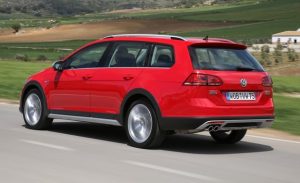
The Outback does not like to go fast in the curves – and will make that clear, if you insist, via the aforesaid lurchiness as well as early onset tire squeal.
And it’s not much for going fast in a straight line, either – at least, when equipped with the base 2.5 liter engine. So equipped, it is an under-engined car. Any car that – best case scenario, with just the driver on board and the car not weighed down with cargo – needs nine-plus seconds to achieve 60 – needs more engine. With a family on board and their stuff . . . out back . . . the 2.5 liter Subaru is Terminally Torpid. The “optional” 3.6 liter six is almost a necessary upgrade.
But the Alltrack doesn’t need more engine – which accounts for there not being an optional one.
Another item: The VW is much quieter. This is not just my own opinion. I have a good friend who owns an Outback and she loves it . . . except for the tire/wind/road noise at highway speeds. This may have something to do with the Subaru’s higher stance (more wind rushing underneath) but regardless, it’s noticeably quieter inside the Alltrack.
Audi quiet.
Which is what you’re buying, really, regardless of the badge – and the price. VW is Audi – and Audi is VW. The cars aren’t identical, but they share a common origin, are designed by the same people and the results are therefore . . . similar.
Other than the higher stance (6.9 inches off the ground vs. 5.5 inches) and the body cladding, the Alltrack looks very much like the Golf Sportwagen it basically is – very much as the Outback looks like the Legacy it basically is.
It is about the same length – 180.2 inches vs. 179.6 inches – and rides on the same 103.5 inch wheelbase as the Sportwagen it’s based on.
These dimensions are more compact than those of the Outback, which is 189.6 inches long overall and rides on a 108.1 inch wheelbase. As a result, the VW fits in tighter curbside parking spots – and takes up less room in the garage – but is also tighter on the inside.
Both cars have roomy first rows – 41.2 inches for the VW and 42.9 inches for the Subaru. But the Alltrack’s back seats come up about three inches short vs. the Outback: 35.6 inches of legroom vs. 38.1 in the VW. It’s a noticeable difference, although a tall adult (me, I’m 6ft 3) can still sit in the Alltrack’s second row without assuming the fetal position. But your knees may rub up against the backs of the front seats. This is not likely to happen in the Outback because of the additional three inches of clearance.
The Subaru also has a bit more cargo room – 35.5 cubic feet with the back seats in use, 73.3 cubic feet with the second row seats folded flat vs. 30.4 in the VW with its second row up and 66.5 cubic feet with the back seats folded.
But either of these cars – these wagons – can carry a lot of Stuff.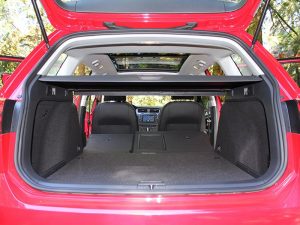
The Alltrack (like the Sportwagen) has more than twice the cargo capacity behind its second row than most mid-sized sedans have in their trunks – and total cargo capacity with the seats down is about four times as much.
I mentioned in my review of the Sportwagen that I was able to use it to carry a 4×4 tortoise enclosure from my house to my ex-wife’s apartment.
The only way to do that with a sedan would be to strap the thing to the roof.
A crossover SUV could do it, too, of course. But then you’d be driving a crossover SUV, with all the same-sameness of styling and top-heaviness of driving that goes with that deal.
In addition to the protective plastic cladding around the wheelwells and rocker panels, the Alltrack also has similarly contrast color/flat plastic front and rear bumper lower sections, which serve the functional purpose of being harder to scuff up vs. painted surfaces. The Alltrack – all trims – also comes standard with a roof rack and fog lights.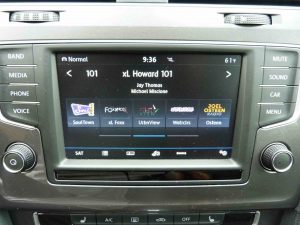
All trims come standard with a 6.5 inch color LCD touchscreen display that’s slightly smaller than the optional 7 inch display you can get in the Outback (a 6.2 inch screen is standard) but it’s much easier to use. The Soobie has smartphone-style swipe/pinch inputs while the VW has both touch and button (physical button) inputs that are more tactile and accurate.
You can order a full-length panorama sunroof – without losing the dual roof racks.
Handsome “V-Tex” leatherette seat covers are standard, as are aluminum pedal trim and stainless steel door kickplates.
VW – being Audi – clearcoats all painted surfaces, including those you don’t normally see, such as the door jambs, underside of the hood and liftgate. That means they look as shiny – and classy – as the rest of the car.
In some other cars, these areas are not clearcoated – and so look dull and faded even though the car is brand-new. It looks awful – and it’s nice that VW (Audi) realizes this and makes sure that every part of the car that’s visible looks top-drawer.
THE REST
One of the few design defects this car has is a tiny center console storage cubby. It’ll take a wallet and maybe your sail fawn. Otherwise, look elsewhere.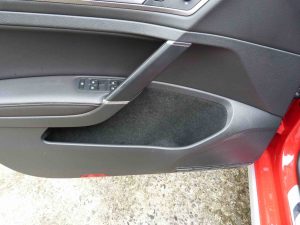
On the other hand, the Alltrack – just like the Golf Sportwagen – has yuge bins/cupholders molded into each lower door panel. These will almost take a two liter soda bottle.
There is also a pull-up emergency brake handle instead of the becoming-common electric push-button parking brake. The push-button brake takes up less room, but the pull-up emergency brake is inherently safer in the event the main brakes fail because you can modulate the braking force applied, and avoid locking up the wheels. Plus, it’s a simpler design (cable actuated) and so less likely to fail and need to be fixed (expensively) at some point post-warranty.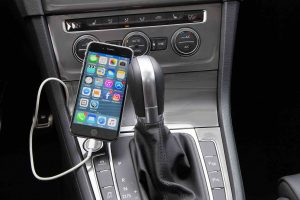
Also laudable: VW got rid of their VW-specific Dongle Thing to connect a sail fawn or other device; there are now standardized USB hook-ups and they are located where they should be – ahead of the gear shifter, in a cubby under the center stack, where you can see them and plug in devices easily.
What’s tragic – and not VW’s fault – is that this car’s not available in the United States with VW’s Scarlet Lettered TDI diesel engine, courtesy of the EPA-media witch hunt over “cheating” on government emissions tests. So, instead of a 50-plus MPG diesel that emits perhaps .03 percent more of some prohibited exhaust byproduct, we get the 30 MPG gas engine that consumes 20 percent more fuel and which produces 20 percent more exhaust gasses by volume.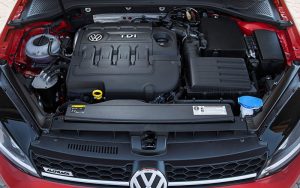
It’s not that the Alltrack’s 1.8 liter engine is “dirty” – or piggy.
It’s that the TDI engine was “clean” – and 50-plus MPG is spectacular; near-hybrid mileage, without the hybrid duplication of effort (two drivetrains) and expense and weight and complexity.
Thank Uncle for us not being allowed to have that option.
THE BOTTOM LINE
What you’ve got here is an Outback that’s not as dowdy – if a bit less roomy.
How deep in the . . . outback do you want to go?
If you like what you’ve found here, please consider supporting EPautos.
We depend on you to keep the wheels turning!
Our donate button is here.
If you prefer not to use PayPal, our mailing address is:
EPautos
721 Hummingbird Lane SE
Copper Hill, VA 24079
PS: EPautos stickers are free to those who send in $20 or more to support the site. 





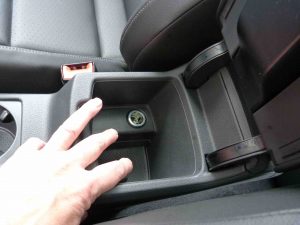


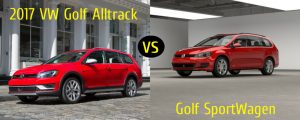






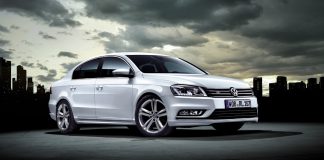
So a B8 Passat Alltrack wagon?
If you are investigating this vehicle, be sure to check out the EA888 Gen 3 engine forum at VWVortex http://forums.vwvortex.com/forumdisplay.php?5360-1-8-TSI-(EA888-Gen-3)-Engine-Forum . I was hoping that third time would be the charm for VW’s gas turbo engine, but that appears not to be the case based on the reports over at the forum.
I had some early onset tire squeal in my Sophie today, having to pass a Clover in a Beemer of all things, while merging onto Highway on a two-lane cloverleaf(!) interchange.
Hi Eric,
Clovers can be found in all types of cars!
Among the ones that annoy me most: The ones who drive fast in a straight line – often using their car to prevent others from getting around them, as by remaining exactly side-by-side another car in the next lane so that everyone is stuck behind them – who then slow for the curves.
Not a little. A lot.
And then – almost invariably – cut the corner too short so that a fourth of their car is over the double yellow and into the opposite lane of traffic!
Amen brother! Along similar lines (ha!), we were driving hilly and twisty back roads the other day (no lines, in fact): I pointed out to my wife I was keeping it on my imaginary half–unless the turn was not blind and occupied. You can tell a lot on the way people handle curves–whether they are good and not just fast.
That’s when I get on their bumper, and flash my lights until they move. I treat them like the fuckwits they really are.
I like the idea of these, but there’s VW questionable reliability to take into account. Also, hopefully the Passat Alltrack is a little more “butch” looking[1]. The chrome accents say “city car” to me.
[1] To attract the Subaru stereotypical flannel-wearing owner, or just because it looks wimpy.
Hi Chip,
The Passat version should get the 2.0 liter GTI engine as well… or so I am hoping!
Towing Capacity of the German Spec. Alltrack is 1500Kg.
Off subject but does anyone know if any State other than Michigan will take your Driving License if you do not give the Highway Revenuer a $100-$300 cash Bond?
I’ll bet if you look up the Euro version of the owner’s manual you’ll find towing specs. VW/Audi doesn’t like to let Americans tow with their vehicles, especially the DSG transmission equipped, because they figure we’ll try to do 90 MPH with them up Vail pass. Some of us might, but most of us won’t. Either way installing a trailer hitch is verboten if you want to try filing a warranty claim. Even if you just put a bike rack on the thing.
Hat tip, Eric!
I figured the car can technically tow – probably 1,500-2,000 pounds; maybe even 3,000. But, as you say, if something breaks, there goes the warranty…
“They are single-speed transmissions”
Actually, mathematically they are the exact opposite of that. They are an infinite speed transmission, and if geared and programmed for performance instead of fuel efficiency, could make the maximum 175 HP of the Subie’s engine almost immediately available by flooring it.
It’s technically a superior design to even a 10 speed automatic — infinite speeds beats ten speeds. What’s holding it back is that they can’t – currently – handle brute levels of HP. Put a CVT on, say, a Hellcat and you’d instantly break the transmission.